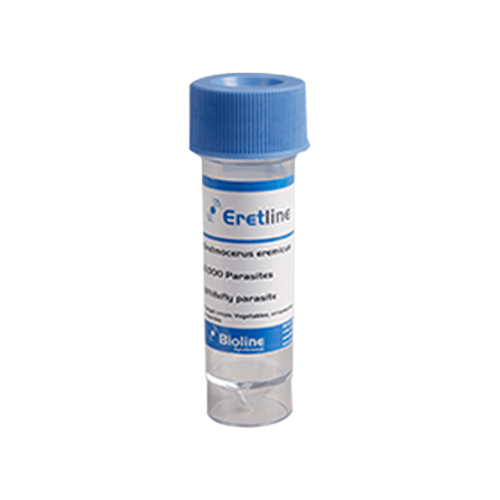



Whitefly Predators
In stock, Pickup available at London Grow HQ
Usually ready in 24 hours

Whitefly Predators
10000 Individuals - Encarsia formosa (for Whitefly)
London Grow HQ
R/O 121 Theobalds Park Road
Enfield EN2 9BH
United Kingdom

DISCLAIMER: All predators are dispatched separately from a different location. Typically you will receive these within 48 hours of placing your order.
Overview
Whiteflies are notorious for causing damage to plants by feeding on their sap and transmitting plant viruses. ENCARLINE presents a powerful biological weapon against these tiny pests. Encarsia formosa is a minuscule parasitic wasp renowned for its appetite for whiteflies. These beneficial insects lay their eggs inside whitefly nymphs, reducing their numbers and preventing further infestations. Contains 10,000 individuals.
ERETLINE vials contain 3,000 Eretmocerus eremicus individuals that effectively tackle whiteflies with ease.
General Information
Both available species will eradicate whitefly infestations, or work as a preventative for potential outbreaks. These are miniscule parasitic wasps that lay their eggs inside whitefly nymphs which in turn reduces their number, preventing further infestation.
Benefits
- Rapid Whitefly Control: A swift and efficient predator of whiteflies, offering fast control and protection for your plants.
- Natural and Safe: A chemical-free solution that poses no harm to the environment, beneficial insects, or your plants. It's a responsible choice for integrated pest management.
- Sustained Protection: Once introduced, these parasitic wasps establishes a population that continues to combat whiteflies for an extended period. This reduces the need for ongoing intervention.
- Enhanced Plant Health: With whitefly populations under control, your plants can flourish, exhibiting improved growth and vitality.
- User-Friendly: Just release the parasitic wasps near affected plants and let them work their magic.
How to Use
- Identification: First, confirm the presence of whiteflies on your plants. Look for small, winged insects that resemble tiny moths and are often found on the underside of leaves.
- Release: Open the vial near the infested plants, allowing the individuals to disperse. Release them in the evening when temperatures are cooler.
- Monitor: Observe the progress as the beneficial wasps seek out and destroy whitefly nymphs. You should notice a reduction in whitefly populations over time.
- Reapplication: For severe infestations, consider introducing additional predators. With time, the population will continue to protect your plants.

